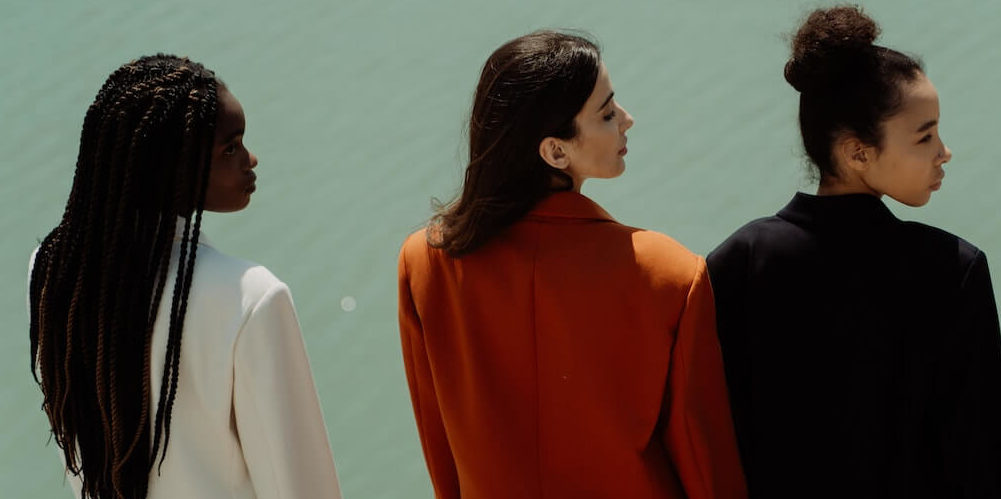At Cure Media, we scream and shout about always-on influencer marketing campaigns and why we believe it’s a way more sustainable method of marketing in comparison to the traditional one-off ads (a.k.a. the Big Bang campaigns).
We also work with lots of fashion brands. From our experience, these two go hand-in-hand for achieving optimal results and we have seen how brands have developed a more sustainable brand image once they have adopted the always-on strategy. There are many reasons why fashion brands in particular can greatly benefit from an always-on approach to influencer marketing, and this is what will be covered in this article.
Why work always-on?
With a seemingly endless amount of choice for contemporary consumers, and considering how many new brands are showing up daily, it’s important to stay consistent with your presence online in order to avoid being left behind or forgotten. Always-on aims to keep brands top-of-mind all the time, keeping their audience engaged and coming back for more.
Just like Starbucks positions themselves on every street corner to keep their status as people’s go-to place for coffee, fashion brands should approach social media the same way: build a presence where your audience spends their time, position yourself on busy social media platforms (instead of highstreets), and show up regularly.
Keeping a presence on multiple channels and adjusting your content depending on the platform is also something brands should keep in mind. Before curating your social calendar and deciding when to post what and where, make sure you do extensive research to understand the platform. Content that works well on Instagram might not do well on Tiktok and vice versa.
Influencer marketing has allowed the always-on dream to become a reality, by providing close relationships between brands, influencers and audiences that progress steadily throughout the year due to the nature of always-on influencer marketing content. These close relationships will, in turn, give brands a network of platform experts and content curators who can adapt their messaging to appeal directly to the target audience on the platform of their choice.
Fashion never stops
When something goes out of fashion, there will always be something to take its place. Denim is an excellent example. One minute trendsetters will inform us that the most fashionable denim you could wear are jeans so skinny you’d have to lay on your bed to button them and the next minute we’re supposed to wear wide-legged jeans, unbuttoned and baggy. Now, we are all apparently exchanging our comfortable mom jeans that have been all over social media during recent years, for the infinitely less comfortable, Y2K-inspired low rise jeans – a shift not all of us feel entirely ready for. In essence, there’s never a time we’re not sensing a new trend in denim, or fashion, for that matter.
For fashion brands, staying up-to-date and creating trendy new items in order to maintain sales and keep customers engaged is a significant challenge, and something that brands must achieve to make the most out of their current customer base. If not, they risk losing market shares to digital native brands who have it in their blood to market themselves effectively to younger generations whose buying power is constantly growing.
Marketing investments for fashion brands should be constant throughout the year, increasing at key periods such as season changes or high-consumption occasions. Influencer marketing becomes especially important in these scenarios as influencers are able to evoke trust in their audience in terms of the newest fashion that brands are releasing.
Making the most of always-on influencer marketing
If you (correctly) opt for an always-on approach to influencer marketing as opposed to campaign-based, there are processes that should be adopted to make the most of your investment. One of the most important ones is getting influencer content released at times of the year where you may have historically not planned or executed any posts. One example would be several months before Black Friday. You might think that having influencer content at these supposedly quiet periods is pointless. However, you’re simply preparing your audiences and conditioning them to keep your brand top-of-mind whilst also potentially getting them to stick something in their calendars so they’re 100% prepared for the upcoming occasion.
Instead of big bang-campaigns, influencers should do monthly activations with your brand to remind customers of who you are. Examples of activations could be having an influencer do a styling challenge or try-on hauls with your brand’s product/s or clothing. Another fun thing to try could be running a product Q and A, which will give customers the feeling of inclusiveness and boost that peer to peer connection. Let the creativity flow and have fun with it!
To summarise, showing up regularly will, in the end, take you one step closer to becoming top-of-mind. In turn, this will result in it being easier to break through the noise during busier seasons/events such as around Black Friday when every brand under the sun will be promoting indistinguishable special offers and discounts.
Bringing it all together
When it comes to which industry benefits the most from always-on influencer marketing, fashion is towards the top of the list.
Fashion brands can leverage always-on influencer content to make themselves relevant throughout the entire year, whereby new lines come out and customers are already prepared to make purchases.
Working always-on with fashion influencers will see consistent content created that caters to audiences who live and breathe fashion, making this approach far more potent than occasional one-off campaigns that don’t take into account the ways in which modern consumers behave.
If this is something you’re interested in and would like to learn more about we have an entire podcast episode dedicated to this topic.


